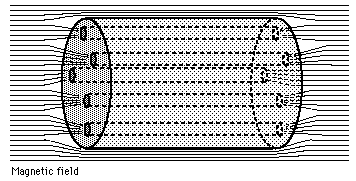Collective Swarms of Particles Shaping and Structuring the Universe
Collective particle motions produce galactic structures. Flocking birds in motion produce fractal patterns that resembles the bird's shape itself with the entire collective entity. Galactic spiral arm filaments contain swarms of high energy supernova particles. Electromagnetic fractal structural patterns are displayed in galaxy jets, bubbles, arm filaments, and the dusty disk. Innumerably more smaller self-similar particles moving in waves, each contains information of the whole entire structure.
New Outer Space Stories - RSS Feeds
-
AI systems proposed to boost launch cadence reliability and traffic
management
-
Tokyo, Japan (SPX) Dec 26, 2025
The global space sector is entering a phase of large-scale satellite
constellations and expanded human lunar activity, drivi...
3 minutes ago
-
18,000-Year-Old Circular Dwellings Made of Mammoth Bones Unearthed in
Ukraine
-
[image: Reconstruction of Mezhirich’s mammoth bone structure in the
National Museum of Nature and Science, Tokyo, Japan. Image credit:
Momotarou2012.]
The...
5 hours ago
-
Medical Cannabis Hype Hits a Wall as Researchers Reveal Big Evidence Gaps
-
[image: Medical Marijuana Cannabis Close Up Buds]A large review led by UCLA
Health reports that medical cannabis does not have strong scientific
evidence f...
7 hours ago
-
Supernova from the dawn of the universe captured by James Webb Space
Telescope
-
An international team of astronomers has achieved a first in probing the
early universe, using the James Webb Space Telescope (JWST), detecting a
supernova...
9 hours ago
-
-
Webb Spots the 'Smoke' from Crashing Exocomets Around a Nearby Star
-
[image: Artist's conception of a series of exocomets approaching a newly
formed star. Credit - NASA / ESA / A. Feild / G. Bacon (STScI)]
The James Webb S...
2 days ago
-
Stuart Talbott: Science Shocked to Find Lightning Going on Mars |
Thunderbolts
-
Since 2022, NASA’s Martian rover Perseverance has been documenting direct
evidence of lightning on the red planet. The rover’s super-cam microphone
has ide...
5 days ago
-
Science Release: Hubble sees asteroids colliding at nearby star for first
time
-
[image: Fomalhaut cs1 and cs2 (annotated)]In a historical milestone,
catastrophic collisions in a nearby planetary system were witnessed for the
first time...
1 week ago
-
We test Celestron's 10-inch StarSense Explorer
-
*This scope uses your smartphone to put thousands of deep-sky objects at
your fingertips.*
2 years ago
-
Hidden Supersymmetry of Electrostatic Fields
-
Juan D. García-Muñoz, A Raya A hidden supersymmetry of electrostatic fields
is evidenced. Proposing an ansatz for the electrostatic potential as the
natura...
3 years ago
-
Scientists Uncover Warehouse-Full of Complex Molecules Never before Seen in
Space
-
Scientists have discovered a vast, previously unknown reservoir of new
aromatic material in a cold, dark molecular cloud by detecting individual
polycycl...
4 years ago
-
1메모리 6기가 peteuplink
-
1메모리 6기가 peteuplink
5 years ago
-
The Fall and Rise of Betelgeuse
-
With its recent uptick in brightness, Betelgeuse appears to be slowly
returning to normal. But will it? Astronomers urge us to keep watch.
The post The F...
5 years ago
-
Welcome to Catch a Star
-
School students around the world are invited to take part in the 2019 Catch
a Star astronomy writing contest. To participate, students should submit a
writ...
6 years ago
-
Astronomers discover extremely hot, pitch-black exoplanet
-
Using the Hubble Space Telescope, astronomers have discovered a most
unusual exoplanet that reflects 94% of the visible light given off by its
host star,...
8 years ago
-
Super Volcano! History's Great Secret: The Global Catastrophe of 535 AD
-
Super Volcano!
*History's Great Secret: The Global Catastrophe of 535 AD*
[image:
https://upload.wikimedia.org/wikipedia/commons/8/80/Super-volcano_Tie...
8 years ago
-
Astronomers observe star reborn in a flash
-
An international team of astronomers using Hubble have been able to study
stellar evolution in real time. Over a period of 30 years dramatic
increases in...
9 years ago
-
Mystery Plumes: Did the Sun Bruise Mars?
-
Strange plumes have been spotted high in the Martian atmosphere that have,
so far, defied explanation. Now scientists think space weather is to blame.
9 years ago
-
-
Giant Bow Shock in Space
-
The beautiful image above shows a giant bow shock wave in space around a
young star. The name of the star is LL Ori and it is located in one of our
favor...
11 years ago
-
-
-
-
















No comments:
Post a Comment